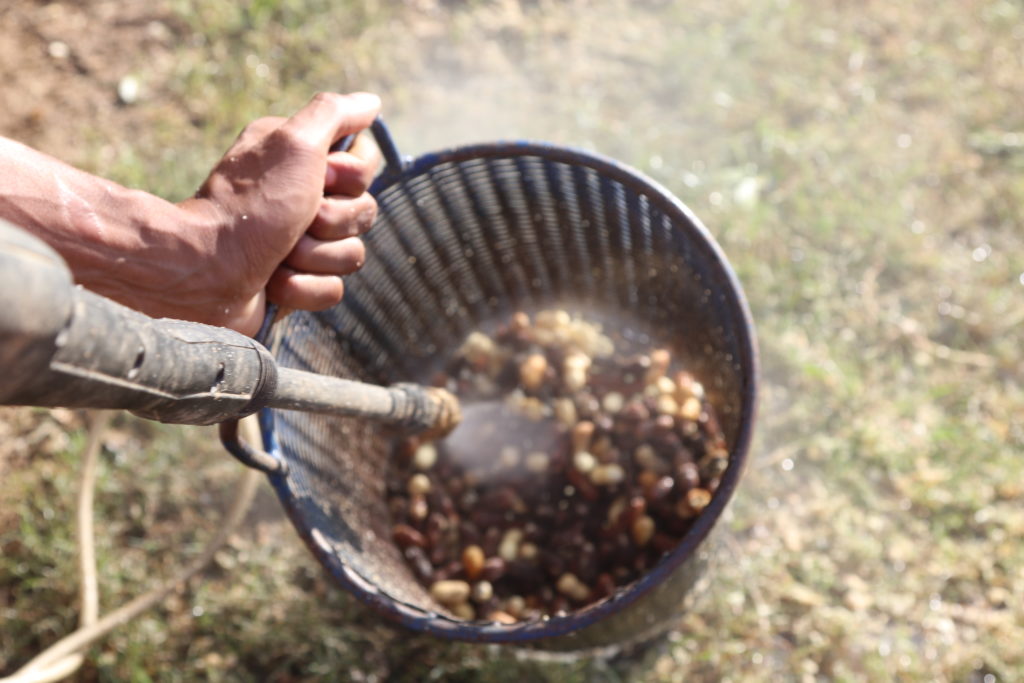Pod Blasting Prepares Peanut Farmers For Harvest

By Maggie Edwards
Choosing the perfect time to harvest peanuts can seem daunting, but pod-blasting programs allow farmers like Thomas Adams to bring hand-dug peanut samples from the field to a test site, helping them zero in on tentative dig dates.

“We’ve used this pod blast on and off for the past 15 years,” said Adams, the Alabama Farmers Federation District 12 director and Alabama Peanut Producers Association board member who farms in Henry County. “With the results of the blast and our planting dates, we know when to get the crops out of our fields.”
Pod blasting uses the simple approach of pressure washing to spray off the outer coat of the peanut.
“The goal of this process is to see the inner coloring of the peanut,” said Henry County Extension Coordinator Jimmy Jones. “That tells us the maturity level.”
Once washed, the legumes are placed on a chart that codes them by maturity and tells the farmer when it’s time to dig. Key factors are color and oil spots. When the peanut is brown-black, it’s harvest time.

To help determine the best time to harvest Alabama’s official state legume, freshly dug peanuts are cleaned and pressure washed to remove the outer coat. Pod-blast programs are held across the state each year to help farmers get the most bang for their buck.
“This chart is a tool for us to use scientific data to determine the peanut’s optimum maturity,” Jones said. “This year, farmers are looking at an average of 137-142 days after planting.”
Getting peanuts out of the field at the perfect time can help save farmers from loss. If a farmer is too late or too early digging, Jones estimates up to 500 pounds of peanuts could be left in the field.
Higher-quality peanuts also means a higher grade at the shelling facility, which impacts farmers’ bottom lines.
“We are trying to help put more money into growers’ pockets,” said Assistant Extension Professor Kris Balkcom, who focuses on peanut agronomy. “We want to help them find the best time to dig so we can get them the highest value for their crop. As Extension agents, it is part of our job to help the producers. Farmers have a very important decision to make, and we can help them do that by using the pod-blasting tool.”
While the Wiregrass Region is the traditional stomping ground for peanut production, farmers in 31 counties across Alabama grow peanuts. Farmers use the pod-blast method — plus factors like weather, field issues, disease and more — to determine prime digging time. Half the peanuts grown in the U.S. are planted within a 100-mile radius of Dothan.
Learn more about peanuts at alpeanuts.com.
